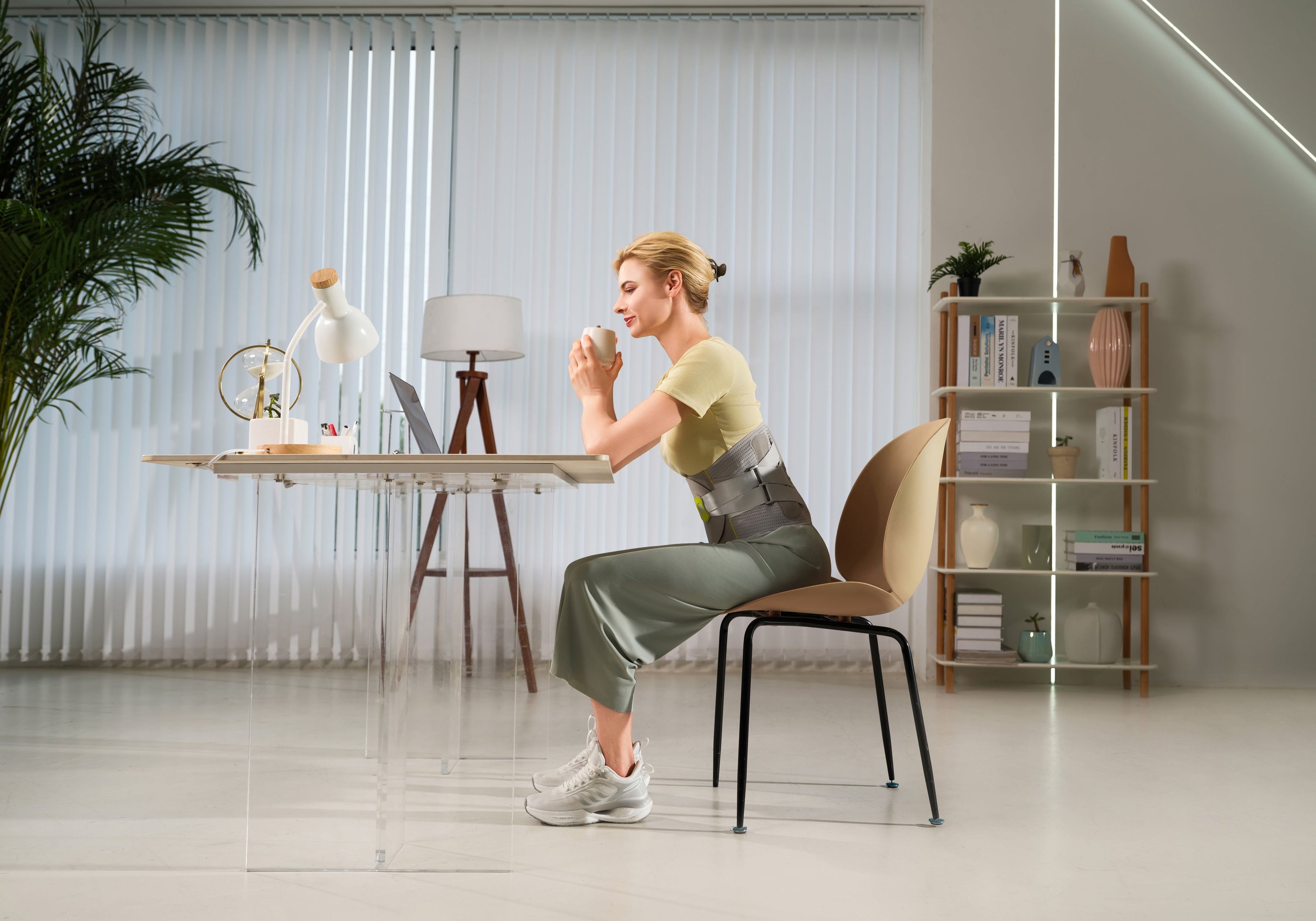In today’s digital age, most of us spend hours sitting—whether at our desks, in our cars, or on the couch. While this sedentary lifestyle may seem harmless, prolonged sitting can have a severe impact on your knee health. In this blog, we’ll explore how long-term sitting damages your knees, review authoritative research on the subject, and discuss practical solutions—including the use of compression (pressure) socks—to help mitigate these negative effects.
How Prolonged Sitting Affects Your Knees
1. Muscle Weakness and Imbalance
Sitting for extended periods causes the muscles around your knees—especially the quadriceps and hamstrings—to weaken. This lack of muscle strength and balance places extra stress on the knee joint, accelerating cartilage wear and increasing the risk of osteoarthritis.
According to the American Academy of Orthopedic Surgeons (AAOS), "inadequate muscle strength can lead to uneven pressure on the knee joint, hastening the deterioration of cartilage." citeturn0news14
2. Reduced Joint Lubrication and Increased Stiffness
Your knee joint relies on the movement-induced production of synovial fluid to stay lubricated. When you sit for long periods, the lack of movement reduces the secretion of this vital fluid, leading to joint stiffness and discomfort over time.
Harvard Health Publishing notes that "regular movement is essential to maintain joint lubrication and flexibility, which helps protect the knees from the negative impacts of prolonged sitting." citeturn0news15
3. Impaired Blood Circulation
Extended sitting can hinder blood circulation in your lower limbs. Poor circulation not only contributes to swelling and discomfort but also deprives the knee joint and surrounding tissues of essential nutrients needed for repair and maintenance.
The Long-Term Risks
If left unchecked, the negative impacts of prolonged sitting can lead to several serious knee issues, including:
- Osteoarthritis: Accelerated joint degeneration due to uneven load distribution and reduced muscle support.
- Chronic Pain: Persistent discomfort and stiffness can significantly impact your daily quality of life.
- Decreased Mobility: Over time, reduced joint flexibility can limit your ability to perform everyday activities, increasing the risk of falls and injuries.
Effective Strategies to Protect Your Knees
1. Regular Movement and Exercise
Make a habit of standing up, stretching, or walking for a few minutes every 30–60 minutes. Incorporate exercises that strengthen the muscles around your knees, such as squats, leg lifts, and hamstring curls.
2. Maintain Proper Posture
Adjust your workstation to ensure that your feet are flat on the floor and your knees are at a 90-degree angle. Ergonomic chairs and adjustable desks can help maintain proper alignment and reduce unnecessary strain on your knees.
3. Lifestyle Modifications
Pay attention to your diet and hydration. A balanced diet low in sodium can help reduce fluid retention, while staying well-hydrated supports overall joint health.
4. Compression (Pressure) Socks
One of the most accessible and effective tools to combat the adverse effects of prolonged sitting is compression socks.
- Improved Blood Flow: These socks apply graduated pressure to your legs, which can help promote blood circulation and prevent fluid from pooling around the knees.
- Reduced Swelling: By enhancing venous return, compression socks can alleviate swelling and discomfort associated with long periods of inactivity.
- Support for Joint Health: While they primarily target the lower legs, improved circulation indirectly benefits the knee joints by ensuring that surrounding tissues receive adequate oxygen and nutrients.
Research and clinical experience confirm that incorporating compression socks into your daily routine—especially when combined with regular movement—can significantly reduce the adverse effects of prolonged sitting.
Conclusion
Long-term sitting is more than just an inconvenience—it’s a silent culprit in the deterioration of knee health. From muscle weakness and reduced joint lubrication to impaired circulation, the risks are real and cumulative. However, by making simple lifestyle changes—such as regular activity, proper posture, and using supportive aids like compression socks—you can take proactive steps to protect your knees.
Remember, while no single solution is a cure-all, compression socks represent a non-invasive, evidence-based method to improve blood flow and reduce swelling, offering a practical way to alleviate some of the damage caused by prolonged sitting. Start incorporating these strategies into your daily routine and give your knees the care they deserve.
Meta Description: Discover how long-term sitting can damage your knees and learn effective strategies to protect joint health. Explore the risks of sedentary behavior and find out why compression socks are a proven solution for reducing knee pain and swelling.
Frequently Asked Questions
Q: How does sitting for long periods damage my knees?
A: Prolonged sitting leads to muscle weakness, reduced joint lubrication, and impaired blood circulation—all of which increase stress on your knee joints and accelerate wear and tear.
Q: What role do compression socks play in knee health?
A: Compression socks improve blood flow, reduce swelling, and support overall lower limb circulation, indirectly easing the pressure on your knees and helping to mitigate discomfort caused by prolonged sitting.
Q: How often should I take breaks from sitting?
A: It’s recommended to stand up and move every 30–60 minutes to promote healthy circulation and reduce the risk of joint stiffness.
Take action today—protect your knees and enhance your quality of life by incorporating movement, proper posture, and supportive measures like compression socks into your daily routine.





